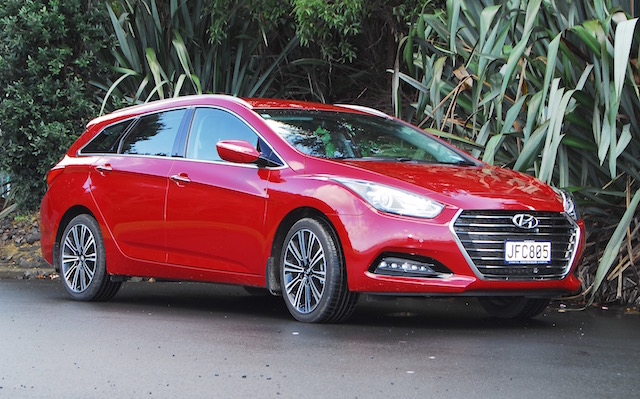
July sales figures show the new-vehicle market is slowly going off the boil, a softening that Hyundai Motors NZ general manager Andy Sinclair expects to continue.

“Sales will slow over the next five months and growth on 2014 will be about 2 per cent come the end of the year,” he says.
Most industry executives expect the same outcome. The Motor Industry Association’s report of July’s numbers said the slowing was “reflecting recent general economic indicators elsewhere in the economy.”
Its CEO David Crawford wrote: “In recent months overall growth has slowed with registrations of new commercial vehicles plateauing … The sales of new vehicles remains strong but … further growth above current levels is uncertain.”
Sinclair has just launched three updated (Series II in Hyundai speak) front-drive passenger cars into a segment in which Hyundai had sold 4648 units at the end of July to be in fourth place on the sales charts.
It had 9 per cent of passenger cars for January-July, a percentage point ahead of the 8 per cent share it finished with in all of 2014, when it sold 7586 units at an average of 632 a month to finish third.

This year Hyundai has averaged 664 car sales a month. It is banking on the new arrivals – i30, i40, and, to a lesser extent, Veloster – to help it wrap up third place again, a position it has held for the past four years.
The new Tucson – the replacement for the mid-range ix35 SUV – will add to numbers when it lands here in a few months. Tucson first appeared here around 2005 and hung on to its handle until 2009 when Hyundai changed it to ix35. Now Hyundai has rechristened it to align it more closely with the Santa Fe, New Zealand’s best selling large SUV.
The i30, i40, and Veloster get upgrades inside and out, the exterior revisions highlighted by a new grille that is the ‘family’ face of Hyundai. The i30 is available as a hatchback or wagon and is priced between $31,990 and $43,990; the i40 as a sedan or wagon and between $42,990 and $59,990.
“Although the statistics show a shift to SUVs, there are still buyers out there who want the handling and load-carrying ability of a wagon,” said Sinclair.

The Veloster is what it is, a coupe/hatchback with two front doors, one rear door, and priced between $44,990 and $51,490.
For the i30 and i40, there’s a mix of revised engines – 1.6, 1.7-litre turbodiesels; 1.8-, 2.0-litre petrols – mated to either a six-speed manual, six-speed dual-clutch automatic or a new dual-clutch seven-speeder.
The seven-speeder is available only with the two diesel engines, where the 100kW/300Nm 1.6-litre powers the i30 and the 104kW/340Nm 1.7-litre the i40. Hyundai says the powertrain in the i30 can return 4.9 litres/100km, or 58mpg.
The Veloster runs a 1.6-litre engine either naturally aspirated or turbocharged. The first option delivers 103kW/167Nm and uses the six-speed dual-clutch unit. The boosted version offers up 150kW/265Nm with a six-speed manual or seven-speed dual-clutch.
A brief drive in all three updated models showed subtle ride and handling improvements. The Veloster’s adjustable steering assistance offers quicker responses than before; its suspension revisions helped here too; but at times the seven-speeder’s electronics got momentarily lost searching for a gear to match engine revs, mostly on an urgent throttle. This is not unusual with dual-clutch units.
The i30 and i40 deserve their reputations as all-rounders with good manners. The i40 has very good manners indeed – better than many of its rivals. It might just be Hyundai’s best car.

